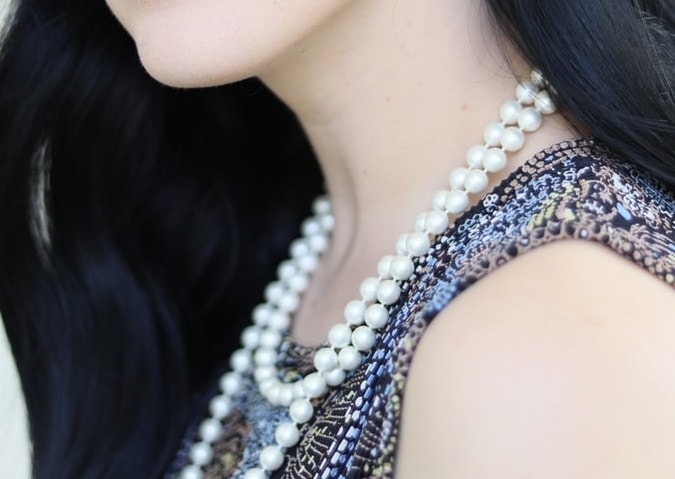Where a pearl grows has a big impact on its quality and value. The two main types of pearls are freshwater and saltwater and each come with their varying pros and cons.
Let’s take a look comparing these two basic pearl varieties and pick out which option is better based on your needs.
How and Where are Saltwater and Freshwater Pearls Grown?
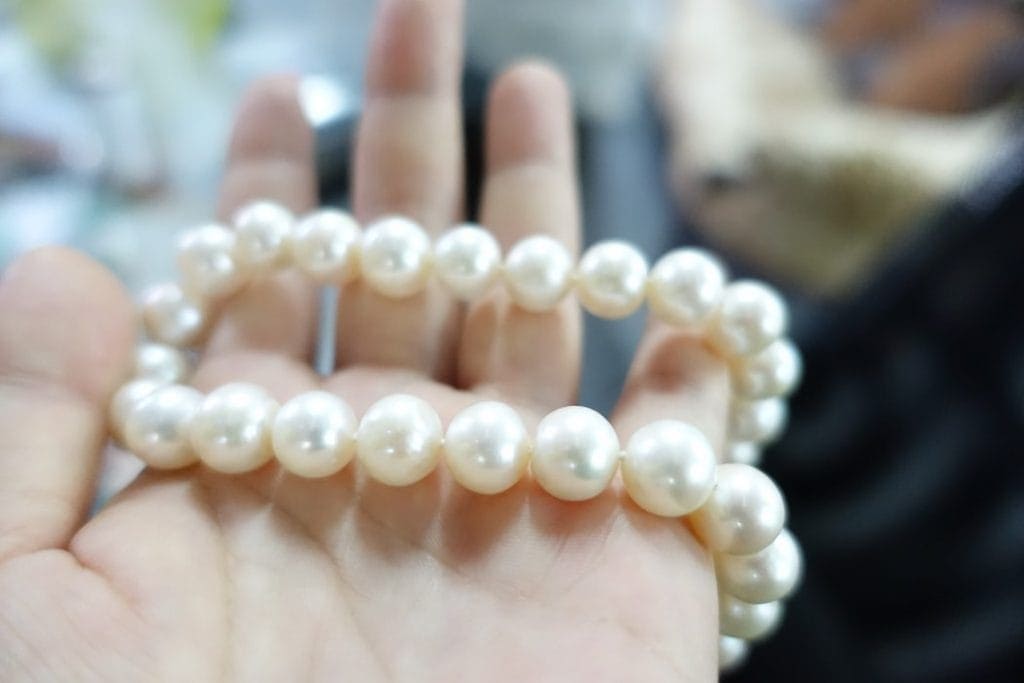
Freshwater pearls grow in mussels and are grown in sources like lakes and rivers. Most freshwater farms operate in China, Japan and USA. China, without doubt, is the largest source for this pearl variety.
Saltwater pearls come in three main varieties – Akoya (mainly from Japan), Tahitian (from French Polynesia) and South Sea (mainly from Australia, Philippines and Indonesia). These pearls grow in oysters and are sourced from farms located in coastal regions, in environments created to mimic the natural habitats of the oysters.
Both types of pearls come from farms, where technicians introduce an irritant into the creature’s tissue forcing it to start producing nacre as a defence mechanism. Over time, the creature produces layer upon layer of nacre which builds up the pearl.
Point to note: Both freshwater and saltwater pearls are cultured, which simply means that they come from farmed sources and not from wild mollusks. Almost all pearls on the market today are cultured as wild/natural pearls are much too rare to be commercially viable.
Saltwater vs. Freshwater Pearls – What are the Differences?
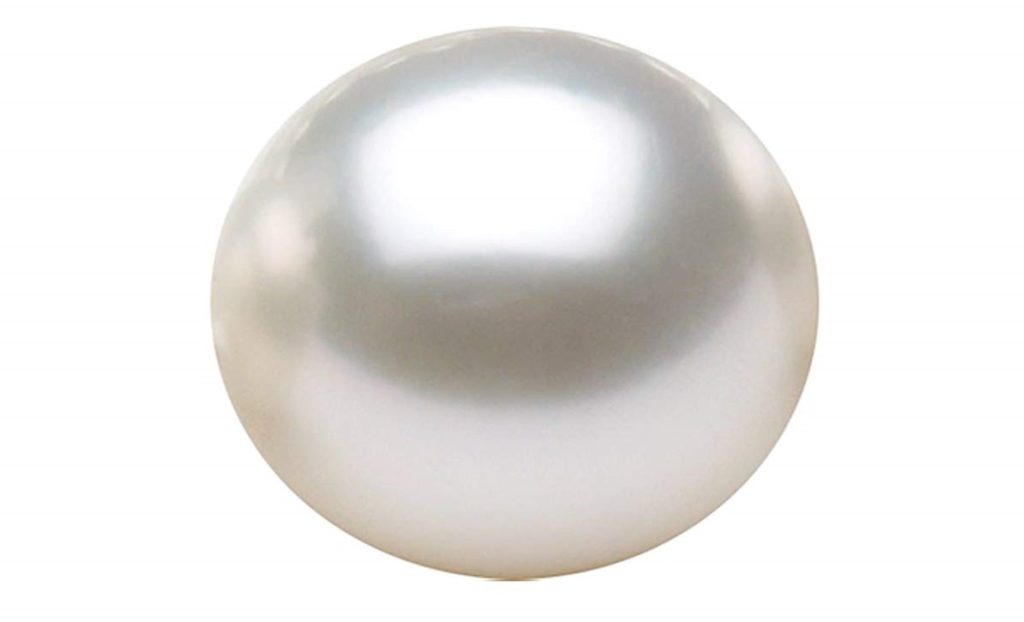
Typically, saltwater pearls have higher quality and are more valuable while freshwater are the most affordable option.
In the past, freshwater pearls were considered an inferior variety but today technology has improved to the point where freshwater pearls are becoming as good as an Akoya pearl. For example, Edison pearls are a new development in freshwater pearls, and they look as good as any saltwater pearl out there.
Here are the main differences between freshwater and saltwater pearls:
Farming
Freshwater pearls are generally harvested in a shorter time than saltwater pearls. The pearls are often ready in about 6 months while Akoya saltwater pearls can take 10-18 months to be ready. This longer period means more cost and labor for the farmers.
Pearl Quantities
Due to its large size and hardy nature, a freshwater mussel can be nucleated to produce up to 50 pearls at a time, while saltwater oysters only produce 1-3 pearls at a time. Because of this, there’s an abundance of freshwater pearls on the market.
Nacre Quality and Luster
Freshwater pearls are nucleated with tissue while saltwater pearls are bead nucleated. This means that a freshwater pearl is made up of nacre all the way through.
However, because saltwater pearls take longer to grow, the nacre quality is often better. This results in better luster. Akoya pearls, for example, have a luster and reflection that most freshwater pearls tend not to have.
So although saltwater pearls have thinner nacre layers, they tend to have better quality nacre. But this is changing with the advancements in freshwater pearl farming techniques.
Size
Pearls grow large depending on how long the mollusk is allowed to secrete nacre to build it up. Because freshwater pearls are harvested in a shorter time than saltwater, they tend to be small.
However, today, you won’t find a big difference in sizes because some freshwater pearls are left to grow to larger sizes.
On a sidenote, saltwater pearls have the largest pearl variety with South Sea pearls reaching sizes up to 20mm.
Color and Shape
Freshwater pearls are called the fashion forward pearl because they come in a range of colors and shapes. Because they’re nucleated with a piece of tissue, most freshwater pearls are baroque in shape.
Saltwater pearls can be black (Tahitian) and gold (Golden South Sea) although they typically come in varieties of white. These pearls also tend to be generally round because they’re nucleated with a bead, giving the oyster a ‘template’ to create a perfectly round pearl.
Value
Freshwater pearls are much more affordable than saltwater pearls. This is because, firstly mussels produce several pearls at once and secondly, they take a shorter time to grow.
Also, saltwater pearls tend to be of desirable color, shape and sizes which make the demand for them higher.
Durability
Because freshwater pearls are made of solid nacre, they’re more durable than saltwater pearls. They tend to have better resistance to chipping, flaking or scratching.
Saltwater or Freshwater Pearls – Which Should I Buy?
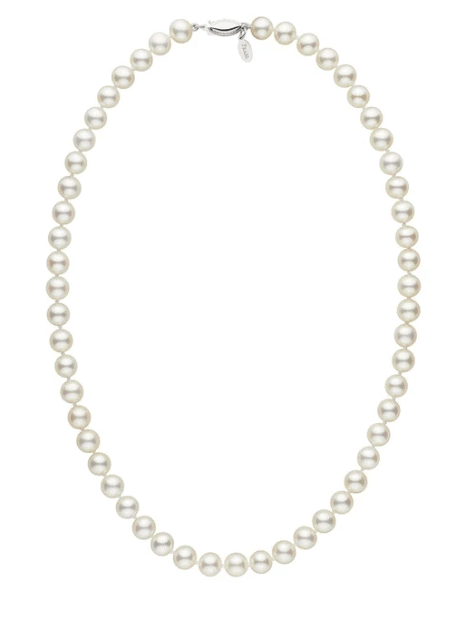
Freshwater pearl necklace
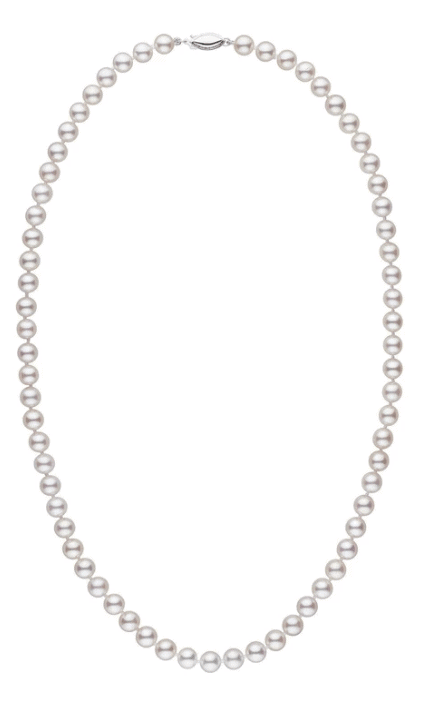
Saltwater pearl necklace
When considering which of these two to choose from, a main guiding factor will be your budget. The two necklaces featured above look very similar in appearance, but the freshwater strand is half the price of the Akoya at only $480.
If you’re on a restricted budget, then freshwater offers you the best option. They’re much less expensive than saltwater varieties and sit at the lowest end of the pearl price spectrum. They also offer good durability so that’s something to consider too.
However, if it’s quality you’re after, then saltwater pearls are generally preferred. They’ve got higher luster and nacre quality.
Because the differences between these two varieties can be quite small, a great option is to start by browsing through freshwater pearl jewelry collections to see if you can find the piece you’re after.
Not sure where to start your pearl search? Check out our guide to the best place to buy pearls online.

